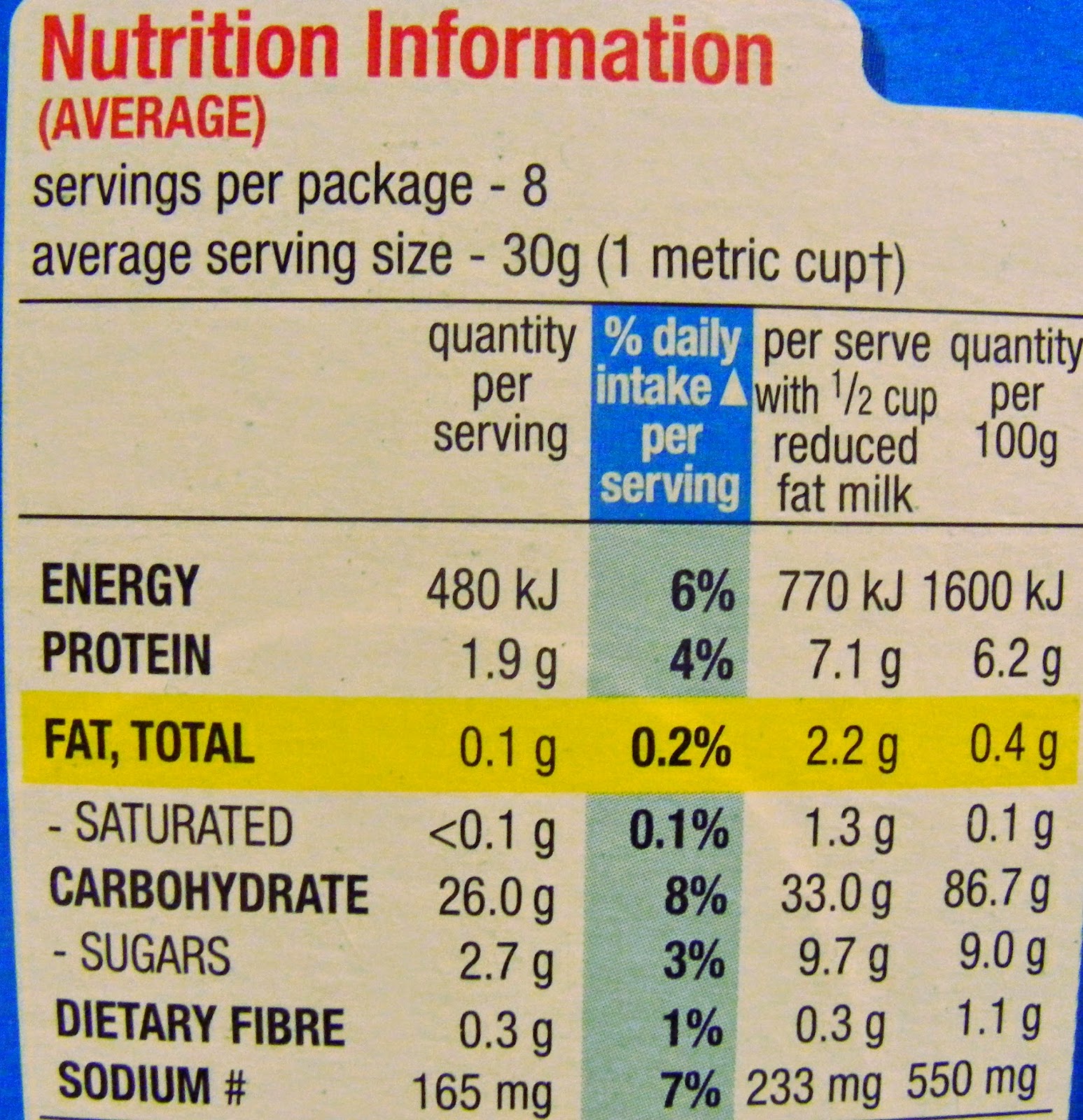Nutrition Panels- Key values
Happy Friday to you all!
I arrived back from America early this morning and I'm feeling a little jet lagged. So I have put together only a short post with some information that will help when reading nutrition panels. I have previously written about how to read nutrition labels on my blog here. The purpose of today's post is to give you ideal figures for things like fat and carbohydrate etc that you should look for. This information came from the Australian Guide to Healthy Eating and I have just simplified it into an easy to read at a glance format.
Using the per 100g column on the nutrition panel
Total fat- less than 10g per 100g
Saturated fat- less than 3g per 100g
(Dairy less than 2g of fat per 100g of product)
Sugar- More than 25g per 100g is considered high in sugar
Sodium (salt)- less than 120mg per 100g is considered low sodium
Fibre (in grain products)- more than 3g per 100g is preferable
Just a few facts to keep in mind when you are looking at food labels. This information is ideal to take with you when grocery shopping.
Let me know if this information helped you out! If you have any questions leave them in the comments below and I will answer them as best as I can.
Have a lovely weekend,
Bridge
*Please note that this information comes from the Australian Guide to Healthy Eating. I am not claiming it as my own work just sharing it with you in a different format.
Click the links below to find me on social media:





Hi Bridget! A question on saturated fats. Why do we want less saturated fat in dairy products as you mentioned in your post compared to other foods?
ReplyDeleteThanks!
Thanks for your question Ryne.
ReplyDeleteDairy is naturally high in saturated fats, however manufacturers now have the technology to reduce the amount of saturated fats significantly without altering the original product's taste and texture. You always want to aim for the least amount of sat fat as possible in your diet. Less than 2g of fat (per 100g) is very achievable and available in the market at the moment.
With products like cheese that naturally have a high fat content you would want to aim for less than 15g fat per 100g because of this.
I hope this answers your question. Enjoy your weekend.
Bridge